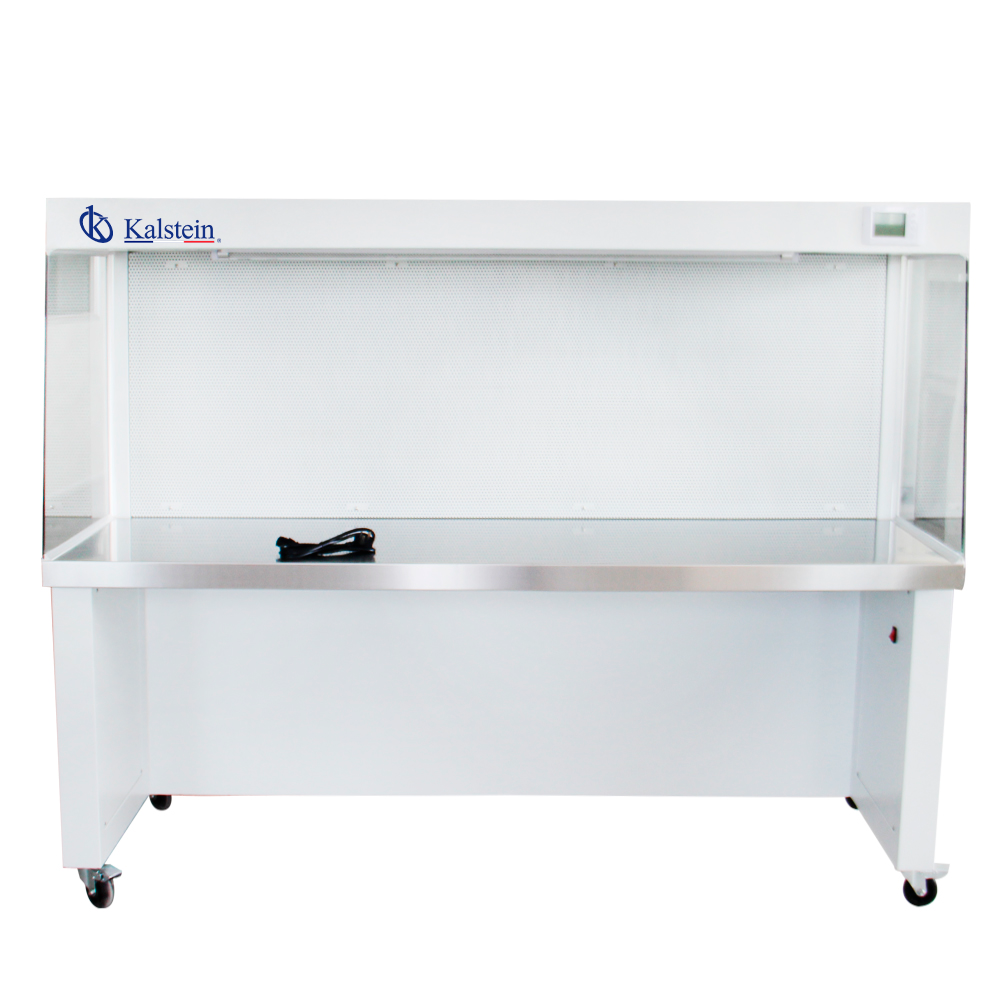Horizontal laminar flow hoods are workstations that have a built-in filter system for air filtration and are therefore used in a wide variety of applications. The hoods offer a large work area, with glass side walls, illuminated by a fluorescent lamp.
These equipments provide a working area provided with a gentle air flow with laminar flow and class 100 conditions, and providing a particle-free working area that protects the sample from any environmental contaminants, such as that required during in vitro botany.
How do laminar flow hoods work?
Horizontal flow hoods are equipment that works through air filtration by means of a built-in HEPA filter, which filters 99.97% of particles greater than or equal to 0.3 micrometers.
When all air entering the work area is filtered through HEPA filters, a unidirectional flow occurs because the air moves through the work area with a uniform speed along parallel lines achieving a sweep or removal of particles present in it. And they have a germicidal UV lamp that allows sterilizing the area before and after work.
What is in vitro botany?
In in vitro botany is a branch of botany where different techniques are carried out and among the most popular we find in vitro cultures, these consist of taking a portion of a plant and placing it in a sterile nutrient medium (usually gelled, semi-solid) where one or many plants will regenerate. Currently the technique of “in vitro” culture has been developed in such a way that it has allowed the use of various plants for the production of compounds or the obtaining of healthier cultures and with specific genetic characteristics.
In vitro plant culture is based on the principle of isolating plant organs, tissues or cells and adjusting the conditions necessary for obtaining physiological or morphogenic responses from them. In vitro cell and tissue culture involves different techniques from different types of plant material such as chloroplasts, cells, tissues, organs and even whole plants.
Relationship between horizontal laminar flow hoods and in vitro botany
In in vitro botany horizontal laminar flow hoods are used as transfer areas in laboratories, where excision, inoculation, and transfer of explants to culture media are performed. Since this work requires the highest levels of environmental cleanliness, the use of horizontal laminar flow hoods is recommended.
These horizontal laminar flow hoods are designed to achieve the protection of the samples used in this science. Avoiding cross-contamination that could lead to loss of samples and loss of time and resources.
What does Kalstein offer you?
Kalstein is a manufacturer of medical and laboratory equipment of the highest quality and the best technology at the best PRICES in the market, so you can make your PURCHASE confidently with us, knowing that you have the service and advice of a company specialized in the field and committed to provide you with safe, economical and effective options to perform your functions in the right way.
This time we present our horizontal laminar flow cabinet without base. This innovative equipment with cutting edge technology has the following features:
- The laminar flow cabinet is a workbench or similar enclosure, which creates a particle-free working environment by drawing air through a filtration system and ejecting it through a work surface in a laminar or unidirectional air stream.
- The laminar flow cabinet is closed from the sides and kept under constant positive pressure to prevent infiltration of contaminated ambient air.
- The laminar flow cabinet is widely used in medical research laboratories, hospitals, manufacturing facilities and other research and production environments.
- Features waterproof plug for LCD display
- Airflow speed, UV timer, UV working time, 2 waterproof outlets located on the side
- Gas tap for UV lamp
- 253.7 nanometer emission for most
- Side glass window
- Transparent side glass windows maximize light and visibility inside the cabinet, providing a bright and open working environment.
For more information we invite you to take a look at: HERE

